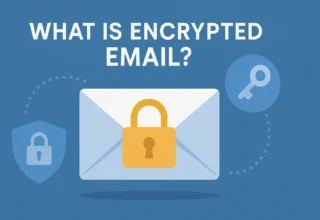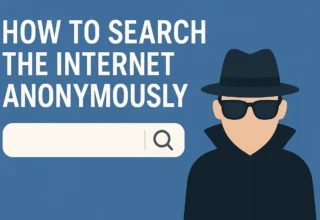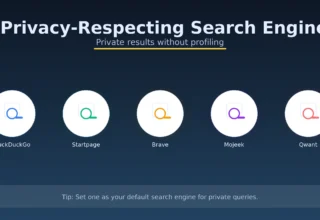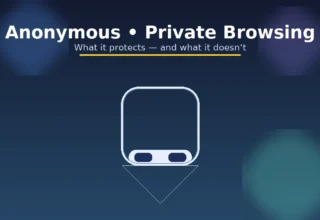
Introduction: Why Would Someone Want to Send an Anonymous Email?
Online anonymity is an important right for many users, especially in situations like :
• Whistleblowing
• Sharing information with journalists
• Protecting your identity from tracking or data collection
• Discussing sensitive topics in private
• Testing services without sharing personal details
Whatever your reason may be, maintaining your anonymity is essential. This guide will show you how to send anonymous emails safely and responsibly.
What Does “Anonymous Email” Mean?
An anonymous email is a message sent without revealing the sender’s identity or personal information—such as their name, IP address, or real email address. Successfully sending an anonymous email depends on three key factors:
• Don’t use your personal email account
• Don’t use your own computer or IP address
• Avoid including identifying metadata in the email
1. Anonymous Email Services
These services let you create email accounts without providing personal information. They typically offer end-to-end encryption and do not store emails or sender data on their servers, ensuring strong privacy.
🔹 ProtonMail
• Based in Switzerland and known for strong encryption
• No need to use a real name or phone number to sign up
• Supports end-to-end encryption
• Protects users from surveillance and targeted ads
🔹 Tuta
• Lets you create email addresses with any name, using the @tutamail.com domain
• Focused on privacy by design
• Simple, secure, and easy to use
• Open-source and completely ad-free
🔹 TempMail, Guerrilla Mail, 10MinuteMail
• Offer temporary email addresses for short-term use
• Ideal for quick, one-time receiving emails
• Do not store email metadata
• Open-source and completely ad-free
🔹 AnonAddy & SimpleLogin
• These services create anonymous aliases that forward emails to your real address
• Your actual email remains hidden
• Email forwarding is designed to avoid storing logs or identifying data
2. Use a VPN or Tor for Greater Anonymity
Even if you use an anonymous email service, your IP address can still reveal your location. To stay fully anonymous:
🔐 Use a VPN
• Hides your real IP address
• Ideal for securely connecting to email services
• Helps prevent tracking by your internet provider or websites
🧅 Use the Tor Browser
• A special browser that anonymizes all your online activity by routing it through multiple encrypted layers
• Highly recommended for whistleblowers, journalists, or anyone needing strong privacy
3. Create a Fake Identity for Your Email
If you want to send an email without it being linked to your real identity:
• Don’t use your real name
• Use a pseudonym and generic details (like a made-up birth date or city)
• Avoid including personal information or photos in the message
4. Use “Spoofing” Tools (Only for Specific Cases)
Email spoofing allows you to fake the “From” address, making it appear as if the email was sent from another address or route.
⚠️ Warning: Spoofing can be illegal or unethical, especially if used to deceive, impersonate, or commit fraud.
This method should only be used in specific, lawful situations—and is not recommended for personal or casual use.
How to Send an Anonymous Email – Step by Step
Here’s a simple and secure guide:
Step 1: Connect with a VPN or Tor
- Turn on a VPN to hide your IP address.
- Alternatively, use the Tor Browser for full online anonymity.
Step 2: Create an Anonymous Email Address
- Choose a privacy-focused service like ProtonMail or Tutanota.
- Create your account using a pseudonym.
- Don’t link the address to other accounts (e.g., avoid setting Gmail as a recovery email).
Step 3: Write Your Email
- Avoid including anything that could reveal your identity.
- Don’t use specific words, phrases, or writing styles that might be recognized.
- If you include images, make sure to remove metadata (like EXIF data) beforehand.
Step 4: Send the Email
- Make sure your VPN or Tor connection is still active.
- Send the message without saving drafts or templates that could be linked to you.
🧪 Alternative Methods: Anonymous Communication Platforms
Instead of email, you can use platforms that offer stronger anonymity:
• SecureDrop – A platform used by news organizations for whistleblowers to submit documents safely.
• GlobaLeaks – A system for anonymous information submission, often used by NGOs or journalists.
• Matrix or Session Messenger – Encrypted messaging apps that don’t require a phone number or email to sign up.
📌 Legal and Ethical Considerations
Using anonymous email is legal, as long as it’s not used for harmful, deceptive, or illegal purposes, such as:
- Blackmail or threats
- Hoaxes or scams
- Attacks on individuals, companies, or organizations
📢 Remember: Anonymity is a tool for protection—not a shield for unethical behavior.
✅ Tips for Maximum Anonymity
• Avoid using your regular computer—use a live Linux USB, like Tails OS, for better privacy.
• Clear cookies and temporary files after your session.
• Don’t reveal any personal details, even by accident (e.g., using phrases or writing styles that are unique to you).
• If needed, send your message during peak internet traffic hours to blend in and reduce traceability.
🧭 When Not to Use Anonymous Email
• When you need legal documentation or accountability
• In corporate or professional settings
• When the recipient needs to reply using their real identity
🧠 Frequently Asked Questions
Is Gmail anonymous?
No. Gmail is linked to your IP address, personal details, and your Google account.
Is hiding the sender’s name enough?
No. Metadata and IP information can still reveal your identity.
Can I stay 100% anonymous?
You can get very close to 100% if you use Tor, a secure anonymous email provider, and carefully follow privacy best practices.
🧭 Conclusion
Sending anonymous emails is possible and useful—as long as it’s done responsibly.
With the right tools and by following essential privacy rules, you can protect your identity and communicate without fear of being tracked.
📌 Remember: Anonymity is not about hiding—it’s about freedom.














